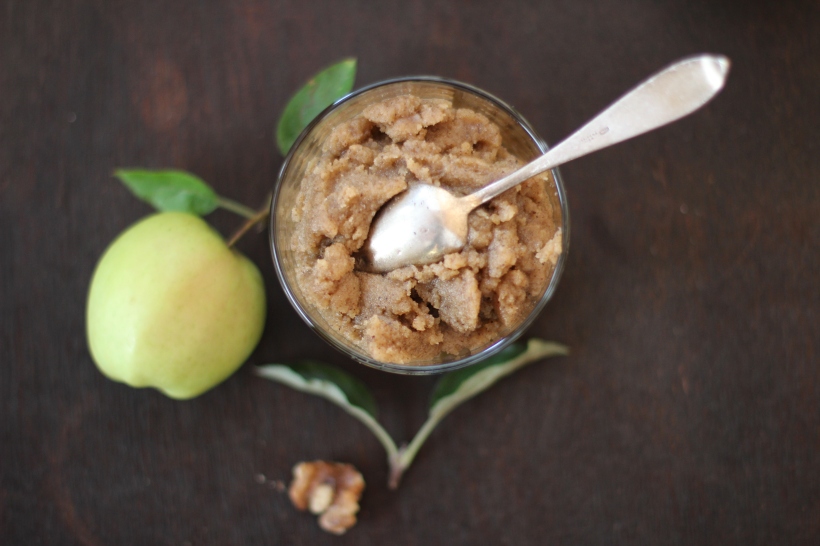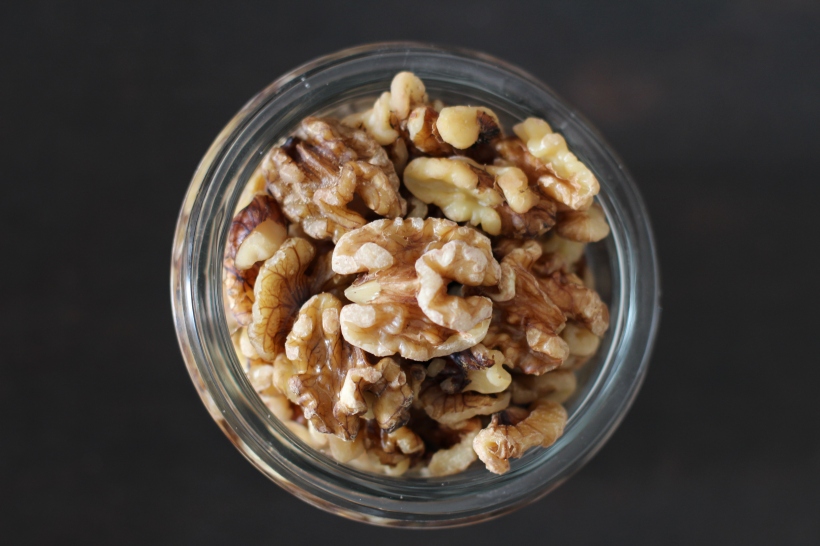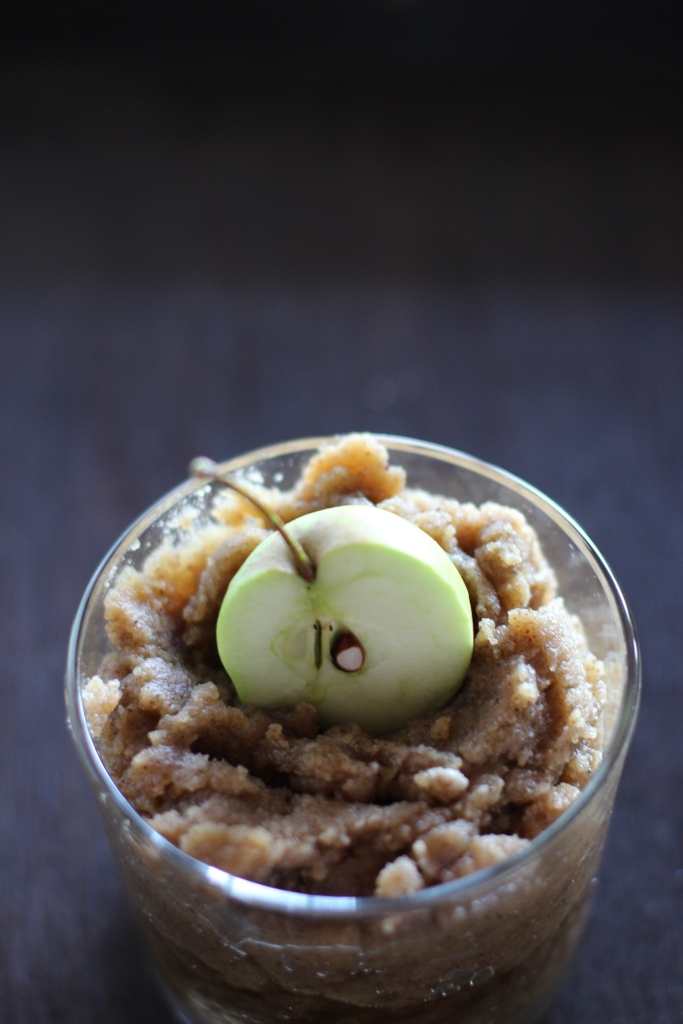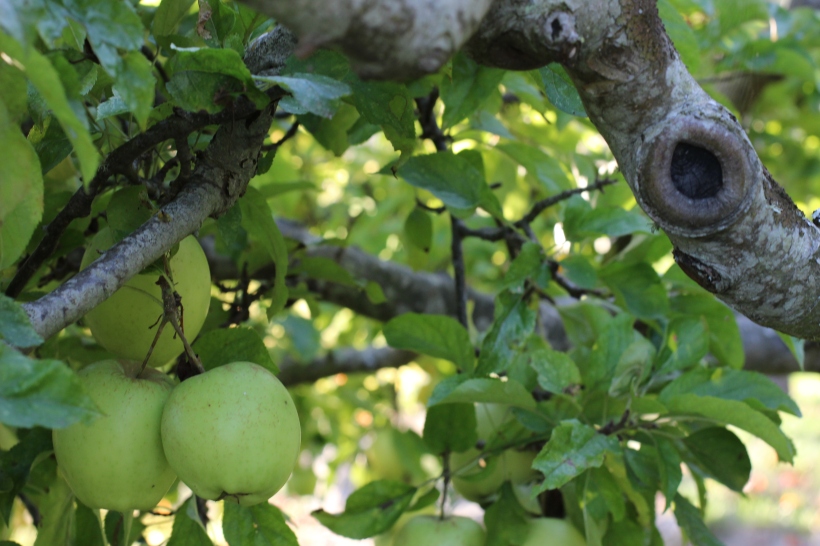 There’s a golden hue in October that seeps into the very fabric of our island landscape and settles deep into our souls. Fall is a season that, despite a drop in temperature, warms us inside out. The hustle of July and August is over and there is a window of time we give ourselves to just sit and watch the beauty of autumn unfold. Our rakes, pruning shears, and wood axe lean abandoned against the side of the house, and we sink back in our chairs outside on the patio and watch the leaves of our many trees loosen their grip on summer. We marvel at how our perennial plants stop growing, like they need a break too; how the thick, early morning fog quiets the earth; and how our dog, Lola, lazes beneath the nut trees, waiting for the chance to eat anything that falls.
There’s a golden hue in October that seeps into the very fabric of our island landscape and settles deep into our souls. Fall is a season that, despite a drop in temperature, warms us inside out. The hustle of July and August is over and there is a window of time we give ourselves to just sit and watch the beauty of autumn unfold. Our rakes, pruning shears, and wood axe lean abandoned against the side of the house, and we sink back in our chairs outside on the patio and watch the leaves of our many trees loosen their grip on summer. We marvel at how our perennial plants stop growing, like they need a break too; how the thick, early morning fog quiets the earth; and how our dog, Lola, lazes beneath the nut trees, waiting for the chance to eat anything that falls. Walnuts and Omega-3s for Heart Health
Walnuts and Omega-3s for Heart Health
Unlike other nuts, walnuts are high in omega-3 fatty acids in the form of alpha-linolenic acid (ALA). Diets rich in ALA are associated with a reduced risk of heart disease as well as lower levels of cholesterol and triglycerides. This is good news for people with rheumatoid arthritis as we have twice the risk of heart disease as healthy adults.
Pennsylvania University nutrition scientist Sheila West, PhD., has found that a diet rich in ALAs might improve arteries’ function and allow them to dilate better. This means that the omega-3s in walnuts can relax blood vessels, which helps to reduce stress on the heart. West says that a daily diet including walnuts or walnut oil lowers resting blood pressure and blood pressure response to stress. In addition, participants in her study who added both walnuts and flax oil to their diet had significantly reduced levels of C-reactive protein, a marker of inflammation in the blood linked to both heart disease and arthritis. Eating walnuts is safe, West says, as long as you cut out other sources of fat. Adding them to your diet may even help to reduce inflammation in those suffering from inflammatory conditions. (Source and Source) Slow-Roasted Walnut Butter
Slow-Roasted Walnut Butter
3 cups walnut halves
up to 1 tbsp melted coconut oil
2 tbsp maple syrup
2 generous pinches of sea salt
Pre-heat oven to 175 degrees Fahrenheit (80 degrees celsius) and roast walnuts in a single layer on a cookie sheet for approximately 40 minutes, turning once mid roast. Remove the nuts from the oven and let stand to cool on the cookie sheet. Place walnuts in a food processor and grind to a fine powder. Continue processing and add up to 1 tbsp coconut oil in a steady steam while the machine is running. (Coconut oil is not necessary in this recipe but it does give it a creamier consistency). Process the mixture until it is rich and creamy, scraping down the sides as you go. Add the salt and maple syrup toward the end and pulse to combine. Processing time varies depending on how powerful your food processor is. Go for a product that is as smooth as possible. My processing time was approximately 6 minutes.
(It’s always advisable to soak walnuts for 4 hours before use, but making walnut butter requires a completely, 100% dry nut. If you’ve got the time you can achieve this through dehydration OR after soaking and rinsing the walnuts with fresh water lay them out on an absorbable tea towel for several hours, then roast at a low temperature on a cookie sheet for 40 minutes. Remove the cookie sheet and allow the walnuts to aerate for atleast 12 hours. This method produces a bitterless butter.)
Try your homemade walnut butter with a crisp organic apple. The pairing is irresistible. Why Roast Walnuts Slow?
Why Roast Walnuts Slow?
Roasting walnuts at high temperatures can damage their delicate oils and result in the production of free radicals. Free radicals in the body can cause lipid peroxidation (the oxidizing of fats in your bloodstream that can trigger tiny injuries in artery walls). Lipid peroxidation is a first step in the buildup of plaque and cardiovascular disease. Store-bought pre-roasted nuts are generally roasted at high temperatures, so it’s best to buy raw nuts and roast them yourself at a low temperature for a longer period of time.
Storage
Walnuts can be stored in the fridge for up to six months. Storing nuts in the fridge prevents rancidity and the breakdown of their natural oils. Walnut butter needs to be stored in a covered glass container in the fridge as well. It will last this way for several weeks.
Medical Considerations
Walnuts are a concentrated source of oxalates, which may be of concern to some people who produce kidney stones or gallstones. Consult your physician.
In Health,
Zuzu
PS Many thanks to Alicia Silverstone for using one of my photographs on her blog The Kind Life and for sourcing it back to The Project Rheum. Take a look at my photo and her beautiful blog here.
References
Mateljan, George. The World’s Healthiest Foods: Essential Guide for the Healthiest Way of Eating. Seattle: George Mateljan Foundation, 2007. Print.

October 11, 2014 at 2:52 pm
This is a wonderful read. Your photos are amazing. Makes me want to be back on the island and enjoying your very special lifestyle
October 11, 2014 at 3:46 pm
Thank you, Neri. We miss you, so come back to visit us soon!
October 11, 2014 at 5:32 pm
Absolutely fabulous Zuzu. Beautifully written. Xxx
Sent on the TELUS Mobility network with BlackBerry
October 11, 2014 at 11:12 pm
Poetry in prose, dear one! Such richness of information: thank you.
October 12, 2014 at 8:15 am
Thanks Kathy! Happy Thanksgiving to you and your family.